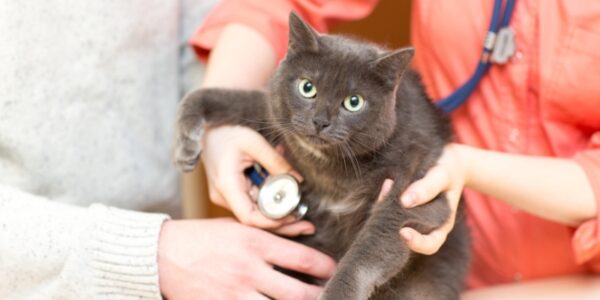Vets on Balwyn recommends de-sexing male and female cats at 12-16 weeks of age, and male and female dogs 6-13 months of age. This is an important procedure both for your pet’s health (as it decreases the likelihood of several serious health conditions) and for the prevention of unwanted litters. With state of the art surgery and recovery facilities staffed by an expert team of veterinary surgeons and nurses, we are proud to offer our clients and patients the highest possible standard of care that puts the comfort and wellbeing of your pet first.
The procedure
De-sexing operations are typically day procedures, so we admit your pet in the morning and discharge them in the afternoon. Upon admission, you will have a consultation with a veterinary nurse where they will go through the admission forms as well as the relevant surgery safety protocols including:
- Pre-anaesthetic blood testing
- Intravenous fluid therapy; and
- Anaesthetic monitoring equipment
For more information on our surgical protocols and optional extras, read our surgery preparation page. The nurse will be able to give you an estimation of the discharge time at admission and we will be in touch with you as soon as your pet wakes up.
Once admitted, pain relief is administered to your pet both before and after the procedure to ensure minimal discomfort and distress. We will also send you home with additional pain relief medication.
Your pet needs to rest for 7-10 days (no walks) after surgery and cannot have a bath or go swimming in this time. We recommend bringing your pet back for complimentary post operative visits 3-5 days after surgery and 10-14 days after surgery to ensure they have healed.
Why de-sex your dog?
De-sexing of male and female dogs is recommended between 7 and 13 months of age, depending on breed. Undesexed female dogs are at risk of developing Pyometra (a life threatening infection of the uterus) and mammary tumours (breast cancer). They will come into season twice a year (heat periods with bleeding and attractiveness to male dogs for 2-3 weeks) and are a risk of becoming pregnant sometimes with other breeds that might result in overly large puppies that are difficult to birth. Undesexed male dogs are more prone to wanting to wander, escaping yards and urine marking everything in sight. Aggression towards other dogs and people can develop after 14 months in age, and they are at risk of developing problems and cancers of the prostate and testicles later in life. This is why Vets on Balwyn recommends de-sexing.
Some of the benefits of de-sexing your dog include:
For female dogs:
- No unwanted litters
- No periods of heat where the female dog attracts the attention of males
- A dramatically reduced risk of mammary tumours (breast cancer) if de-sexing is performed before the animal’s first heat
- Reduces the risk of pyometra (infection of the uterus) which is a potentially fatal condition
For male dogs de-sexed before puberty:
- Less territorial behavior including urine marking and displays of aggression towards other dogs
- Less inclination to go ‘wandering’
- Reduced risk of prostate, testicular and perineal hernia problems as they age
Why de-sex your cat?
Some of the benefits of de-sexing a male cat
- Less urine marking (spraying)
- Less territorial (less likely to fight other cats)
- Less likely to develop Feline Immunodeficiency Virus (Feline AIDS)
- Less likely to develop Feline Leukemia
- Less likely to roam
Some of the benefits of de-sexing a female cat
- No more periods of heat (characterised by meowing, rolling around on the floor, and general restlessness)
- Reduced risk of a uterus infection (pyometra)
- Reduced risk of breast cancer (mammary neoplasia)
- No unwanted litters
On top of the above-mentioned benefits, desexing your pet also reduces council registration fees.




